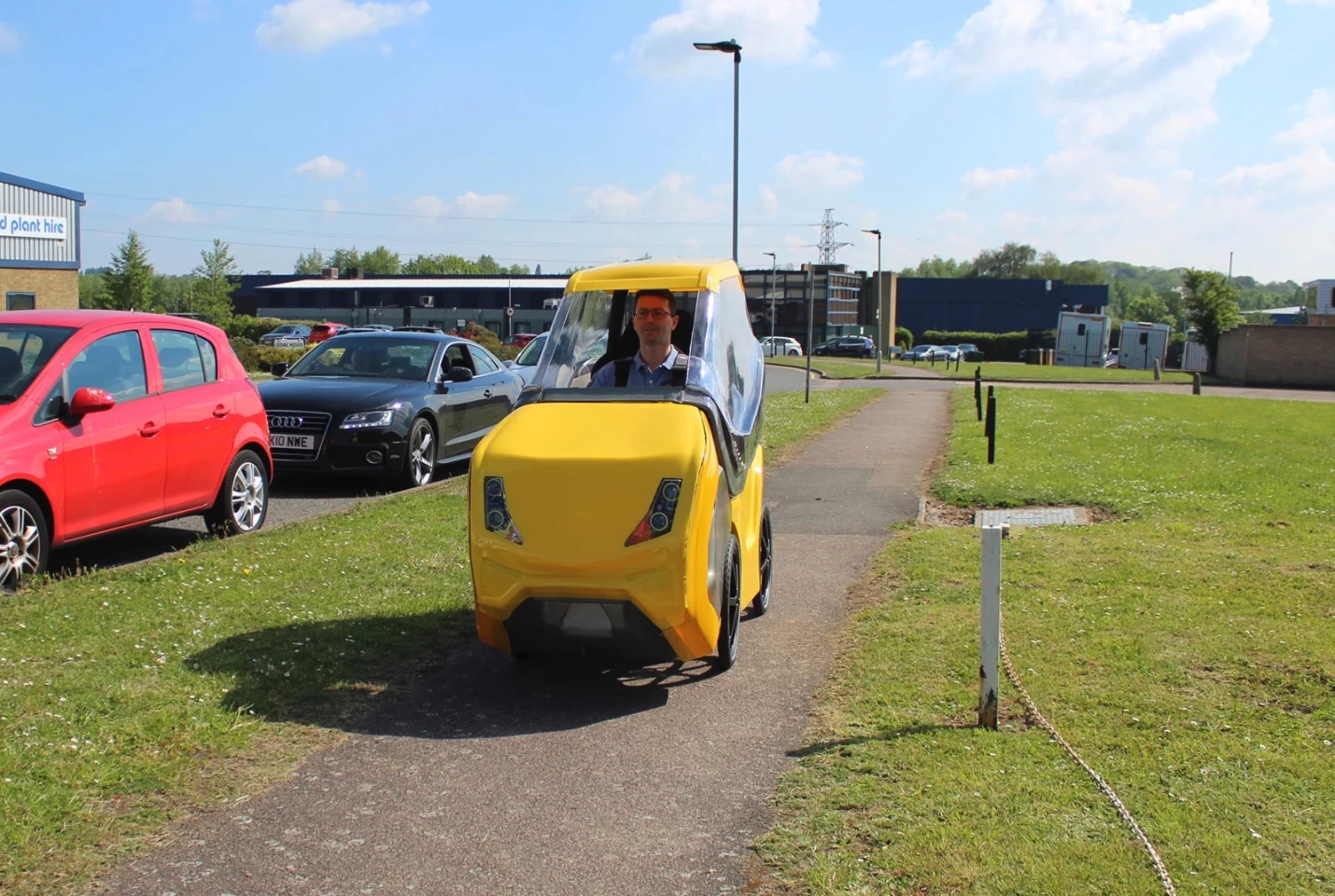Although commuting by bicycle certainly is good for one's self and the environment, there are days when it's just too wet or too cold. It's on just such days, though, that the four-wheeled, fully-enclosed, motor-assisted DryCycle is intended to really shine.
Designed by British cyclist and entrepreneur Andy Murphy, the DryCycle is officially classified as an Electrically Assisted Pedal Cycle. That said, some people would probably think of it as a velomobile, which are typically fully-enclosed recumbent tricycles.
Riders get in and out of the DryCycle by raising and lowering its hinged polycarbonate canopy, and are protected from the elements by its ABS body. Some protection against impacts with cars or other obstacles is additionally provided by a welded aluminum frame, complete with crumple zones – the vehicle reportedly has been crash-tested, indicating an "extremely low" risk of head injury in the event of a front-end collision.

Once they get pedalling, users are assisted by a 250-watt Shimano Steps E8000 motor. The cycle has a top electric-assist speed of 15.5 mph (25 km/h), and can reportedly travel up to 30 miles (48 km) on one four-hour charge of its dual 500-Wh Shimano batteries – a separate 270-Wh battery is used to power its full lighting system and other electronics.
Speaking of which, a Shimano Di2 electronic shifting system allows riders to wirelessly switch between 11 gear ratios. There's also a reverse gear, making it possible to pedal the DryCycle backwards when parking – on most velomobiles, riders simply have to put their feet on the ground Fred Flintstone-style, and "walk" the vehicle back.
Some of its other features include full front and rear suspension, hydraulic disc brakes, sidestick-style steering, an electric horn, and a remote-operated electronic cockpit lock – a heater and a windshield wiper are available as extras. The whole thing weighs a claimed 120 kg (265 lb), which is also its maximum rider/cargo payload.

If you're interested in getting a DryCycle of your own, it'll cost you £14,995 (about US$19,358), plus delivery. Prospective buyers can reserve one by placing a £50 ($65) deposit via the Source link below, with shipping expected to take place in the first quarter of next year.
And for examples of other fully-enclosed, electric-assist "quadricycles," check out the Podbike, the PodRide, the Pedilio, and the Velove Armadillo.
Source: DryCycle






